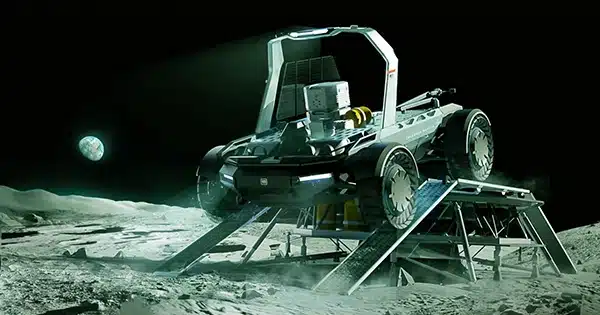The moon is destined to receive more visitors than ever before, with NASA and its partners preparing to create a permanent base on the lunar surface for astronauts to stay for extended periods of time.
Crews will explore the lunar surface in next-generation rovers, but mission planners are concerned about the amount of harmful dust that the buggies will stir up as they travel.
Engineers are working on a solution to melt the dust and produce paved surfaces, which will provide rovers and their occupants with a safer and smoother voyage.
The research uses a laser beam to melt powdery soil into a glassy solid surface for Earth-based tests using replicated moon dust. Engineers anticipate that humans on the moon will be able to replace the laser with sunlight concentrated through a Fresnel lens.
The European Space Agency (ESA) released information on the project in a video on Sunday. It comes after a more extensive study on the technology was released earlier this month.
Engineers working on the project discovered a way to use a 1.77-inch (4.5-cm) laser beam to construct triangular, hollow-centered geometric forms 7.87 inches (20 cm) across. According to ESA, the tiles can be interlocked to form solid surfaces across extensive amounts of lunar dirt, such as roadways or landing pads.
The project team believes that utilizing the strategy would take about 115 days to build a viable landing pad.
Advenit Makaya, an ESA materials expert, described the resulting material as “glasslike and brittle,” adding that because it would be subject to downward compression stresses, repairs would be unneeded if it cracked.
The moon’s low gravity renders lunar dust abrasive and sharp, posing a major threat to visiting spacecraft.
“Dust mitigation has been an issue for NASA since Apollo,” according to the US space agency’s website. “When astronauts were entering and exiting the lunar module, the dust got everywhere — it clogged mechanisms, interfered with instruments, caused radiators to overheat, and even tore up their spacesuits.”
Engineers will continue to refine the paving technology in the hopes of sending it to the moon to literally turn dust into roads.
















